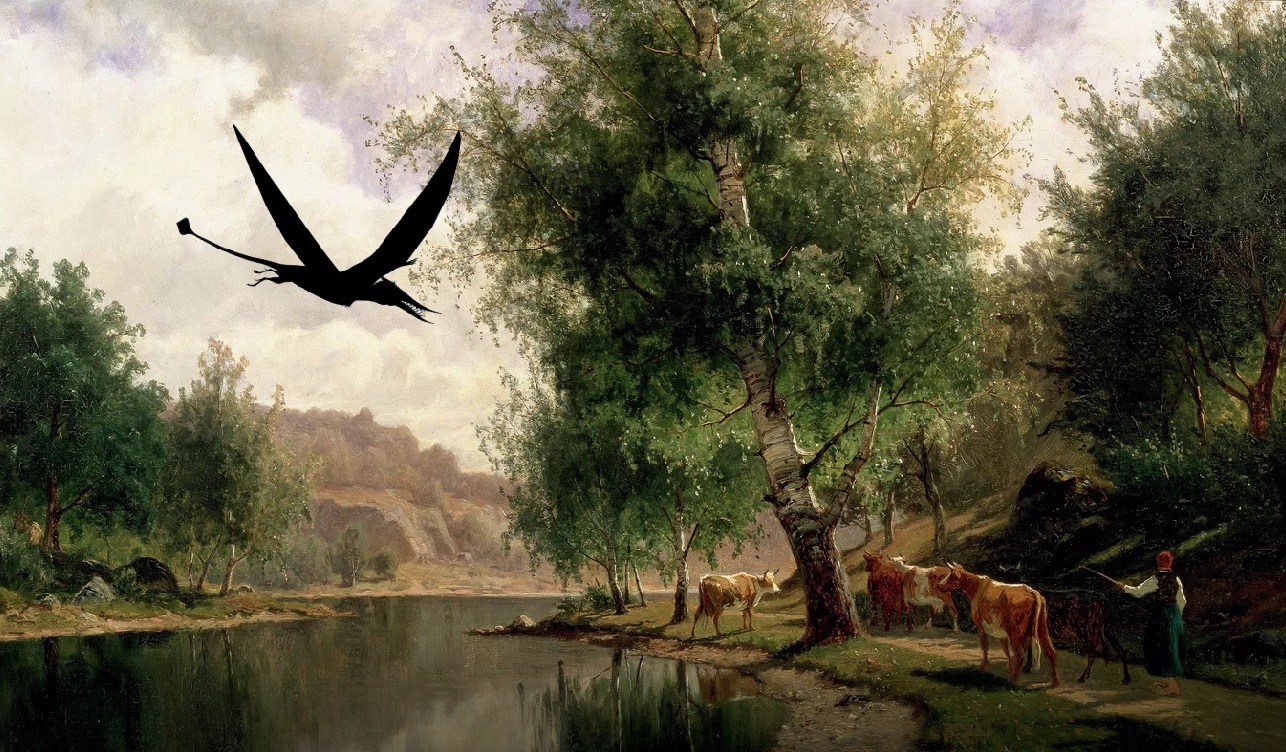By the investigative journalist Jonathan Whitcomb
Introduction
Glen Kuban and I completely disagree on the value of eyewitness testimonies of flying creatures that have been reported to me as living pterosaurs, what some people call “pterodactyls” or “flying dinosaurs” or “dragons.” He has spent years trying to convince people that all the testimonies are of no value; I have spent years writing books and online publications explaining why some of them are of great value.
We also differ in experiences and background:
- I am a cryptozoologist who interviews eyewitnesses of apparent living pterosaurs; Kuban is not a cryptozoologist and apparently has never interviewed anybody.
- I have written a scientific paper, in a peer-reviewed journal, on living pterosaurs; Kuban has not.
- I have written five nonfiction books on these flying creatures, in ten total editions; Kuban has never written any book about them.
- I have been certified by the American Guild of Court Videographers and worked as a professional videographer for attorney firms, often interviewing people; Kuban has no experience interviewing anyone.
- I have traveled to many areas, interviewing people and searching for flying creatures, including an expedition in Papua New Guinea; Kuban has not.
What is Glen Kuban’s background? He has a keen interest in paleontology, although most of his experience seems to be as an amateur paleontologist. To the best of my knowledge, he has never taught that subject in any university.
Here’s the point: The subject of human encounters with apparent living pterosaurs has been entirely in the realm of cryptozoology, and Kuban is anything but a cryptozoologist.
What do we have in common? We’re both human, so we make mistakes, at least sometimes. We also both seem to be passionate about science, although how we would define science may differ.
Reader-review for a new book on living pterosaurs
Kuban has taken it upon himself to try to convince potential readers of my newest book to avoid it. He seems to have purchased his own copy of The Girl who saw a Flying Dinosaur. His Amazon reader-review of it, however, has serious problems.
His misspelling a word in the title of his review (“unspsecting”) has little importance, only hinting at a general potential for carelessness. But things go downhill from there.
The title of my book refers to six-year-old Patty Carson, who witnessed a very strange flying creature at Guantanamo Bay, Cuba, around 1965. Kuban refers to her as a “Cuban girl.” The book was written for children and young teenagers, and I now see that perhaps I failed to make it perfectly clear that Patty’s family was American, not Cuban. But Kuban is not a child and should have realized that a man who worked in the Pentagon in 1965 would not likely be Cuban and neither would his little daughter. In addition, Guantanamo Bay in 1965 was not a playground for Cuban children.
That mistake by Kuban might be excused, but it gets worse.
Kuban mentions “the discovery in the 1700s or 1800s of animals such as the mountain gorilla, Komodo dragon, and Omura’s Whale.” If he knows much about biology then he needs to read what he has written before he publishes it online. I never wrote anything like that in my book. What’s in The Girl who saw a Flying Dinosaur? Here’s the relevant sentence from page 51:
We now know about many kinds of animals now living. Some of them, however, were not known to any Western scientist in the year 1800.
It then lists ten animals, including the three mentioned by Kuban. In the book, notice the word not. Kuban wrote the opposite of what the book says. It gets worse.
Nothing in this book is about religion: nothing about the Bible or about divine creation or about Christianity. Yet Kuban writes about my religious beliefs as if he knows a lot about them and then writes that my “claims are not even endorsed by any major creationist or cryptozoology groups.” Regardless of the truth of that, it is irrelevant to the book. After all, that part of the Amazon page is for writing about the book; it’s not a personal space for Mr. Kuban to criticize another person regarding religion.
Conclusion
I suggest people be allowed to know what books actually contain, and a book review should be about that book.
.
###
.
Glen Kuban and Living Pterosaurs
Glen J. Kuban seems to me to have dedicated much of his life, in the past seven years or so, to try to convince people that no modern pterosaur exists, anywhere on the planet, and that is where we completely disagree.
.
Ropen denied by Glen Kuban (sighting in 1944)
. . . Kuban apparently never communicated with either Hodgkinson or the army buddy. Guessman and I have interviewed Hodgkinson, and it was clear to us what the veteran said about the buddy who had no desire to tell anybody that they had seen a living pterosaur the size of a small airplane. The denial was ONLY immediately after the sighting, and nothing was said by that buddy about any possibility of any misidentification.
.
Scientific paper on living pterosaurs
The ten-year anniversary is approaching for the publication of my scientific paper “Reports of Living Pterosaurs in the Southwest Pacific,” so here is an introduction to that peer-reviewed article, with links to images of some of the pages.
.
Features five nonfiction books on these shocking flying creatures
.
The Girl who saw a Flying Dinosaur (new book)
- Simple to read yet stimulating for middle-grade children and teens
- Explains the benefits of believing someone who has seen something
- Gives interesting comparisons between accounts, allowing the reader to come to his or her own conclusion about each report
- Explains the three major interpretations available for a sighting report, allowing the reader to choose one of them for each reported account
- Gives the young reader many photos, sketches, and other images, making the book easier to dig into and understand
.
Examines two scientific papers that were published in a peer-reviewed journal of science in the twenty-first century
.




